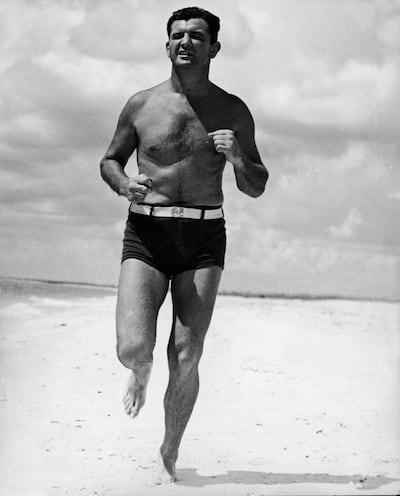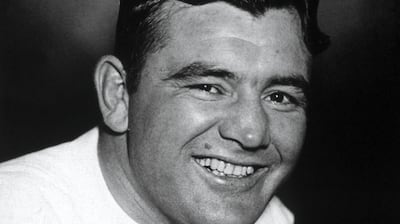Although he considered himself to have “more brawn than brains”, James J. Braddock had an unerring ability to make the best of a bad situation.
The son of an Irish mother and Anglo-Irish father, and born in Hell’s Kitchen in New York in 1905, Braddock faced a difficult path at the beginning of a turbulent century. Indeed, it was the Great Depression that found him at his lowest ebb; forced to turn his back on a floundering boxing career to work as a longshoreman to keep his family from poverty. Once, he had dreamed of playing college football for Notre Dame. It was a disappointment that might have finished a lesser man.

Braddock had turned pro at the age of 21 in 1923, and seemed to be about to make it big when, to the surprise of the pundits, he knocked out Tuffy Griffiths. In 1928, in his title-shot fight, he lost to Tommy Loughran. His disappointment was compounded by the damage he did to his right hand in the process, fracturing it in several places. This was the beginning of a decline that would continue over his next 33 fights, with his right hand fracturing again and again.

When he had to give up boxing to work on the docks, he found his right hand had become almost useless, meaning he had to compensate with the left. Little did he know, it was this practice which would begin to turn the tide in his favour.
In 1934, he was given the opportunity to fight again, against John “Corn” Griffin, in a contest that was intended simply to pave Griffin’s way to higher profile fights. Braddock knocked Griffin out in the third round, leading with his left hand and flummoxing his opponent - and many thereafter - with his ability to take punches.
In the years that followed, Braddock would cut a swathe through heavy-hitters such as Art Lasky, John Henry Lewis, and finally Max Baer, the Heavyweight Champion and the last to make the mistake of underestimating Braddock.
The trauma of Braddock’s breadline experiences gave him the hunger necessary to push through his injuries; spurred on by a terrible fear of a return to poverty he said of the fight with Baer: “Whether it goes one round or three rounds or ten rounds, it will be a fight and a fight all the way... When you’ve been through what I’ve had to face in the last two years, a Max Baer or a Bengal tiger looks like a house pet. He might come at me with a cannon and a blackjack and he would still be a picnic compared to what I’ve had to face.”
Baer, who had barely trained for the fight, lost by unanimous decision to Braddock in Madison Square Garden in June 1935.

This is where the version of Braddock's life made famous by Ron Howard's movie starring Russell Crowe ends. But Braddock had a few more surprises in store. Suffering increasingly from arthritis in his hands, he lost his title to Joe Louis in 1937, and retired from boxing in 1938.
Not a man who seemed at ease without an occupation, he enlisted in 1942, along with his manager Joe Gould. He would serve in Saipan, training soldiers in hand to hand combat. In the 1960s, he would be involved in the construction of the double-decker Verrazano-Narrows Bridge, connecting Staten Island and Brooklyn - a fitting landmark to a man of his stature.

For the rest of his life, James Braddock would remember the anxiety and shame of having to accept government relief money during the Great Depression to support his wife Mae and his three children James, Howard and Rosemarie. It’s a testament to his sincerity and empathy that after he became financially secure again, he repaid the money and continued to support the Catholic Workers Organisations who had supported him in his time of need.
Braddock died peacefully in his sleep in 1974 at the age of 69. He was entered into the International Boxing Hall of Fame in 2001, and James J. Braddock North Hudson Park in Bergen, New Jersey, is named for him. Although his official record is 51 victories in 82 fights, this doesn’t count the many times he conquered adversity outside of the ring.
This Extraordinary Emigrants article was written by Jessica Traynor, deputy museum director of EPIC The Irish Emigration Museum (epicchq.com) in Dublin's Docklands, an interactive museum that tells the story of how the Irish shaped and influenced the world.


















